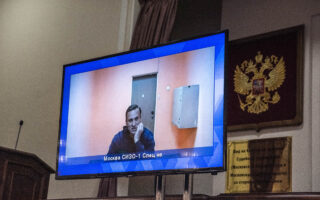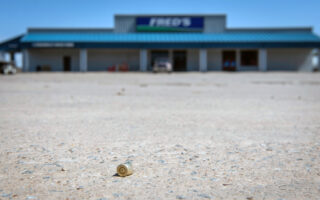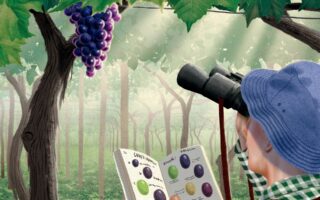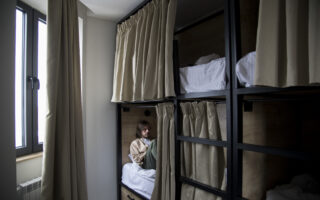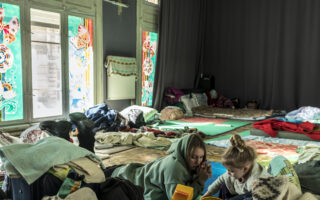Museum of Natural History’s new science center takes shape
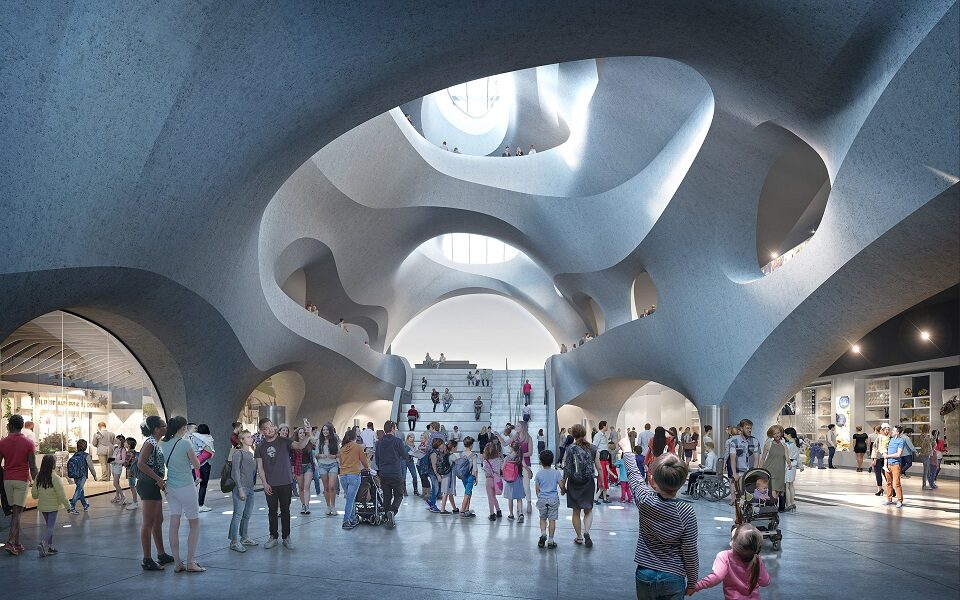
In 2014, when the American Museum of Natural History first announced plans for a major expansion devoted to science, the museum president, Ellen V. Futter, talked about the “gap in the public understanding of science at the same time when many of the most important issues have science as their foundation.”
Now, in a world that has been transformed by the mounting dangers of climate change and the coronavirus pandemic, that concern has become ever more pressing, Futter said, and it has informed the construction of the museum’s $431 million Richard Gilder Center for Science, Education and Innovation, the finer details of which were unveiled Monday, along with a new opening date of next winter.
“It’s only become more intensified and urgent in a post-truth world where we also have acute threats to human health in the form of the pandemic and to the environment,” Futter said. “At the same time, we have a crisis in science literacy and education in this country and we have denial of science.
“This is a building for our time,” Futter said of the 230,000-square-foot structure that is visibly taking shape along Columbus Avenue near West 79th Street. She added that it “speaks to some of the greatest issues before us as a society, as a natural world.”
During a recent hard-hat tour of the six-story structure featuring an undulating stone and glass exterior, architect Jeanne Gang said the building is “about connections.” Architecturally, for example, Milford pink granite was used for the Central Park West entrance, designed by John Russell Pope, in the 1930s. The same stone, from a nearby quarry, is being used for the west facade of the new project.
The project also emphasizes links between the museum’s various themes and activities – from exhibition to education; from children to scholars; from dinosaurs and whales to insects and butterflies.
The building also seeks to improve the museum’s physical circulation, creating about 30 new connections within 10 existing buildings so visitors can flow more easily from one area to another. “We’ve been plagued with dead ends for years,” Futter said. “They are gone.”
Whereas the museum has always projected a kind of imposing, inscrutable majesty, its new building is consciously more porous, with welcoming floor-to-ceiling classroom windows that allow people “to look in and look out,” Futter said, adding, “This is an invitation.”
The center’s transparency also extends a hand to the museum’s neighbors, some of whom were unhappy with the project’s initial incursion into the adjacent Theodore Roosevelt Park (the footprint was scaled back in response). A legal challenge brought by a community group against the Gilder Center was dismissed by the New York state Supreme Court Appellate Division in 2019. A new landscape design of the park by Reed Hilderbrand adds seating and new plantings.
An expanded library also aims to engage more of the public with a new scholars’ reading room, an exhibition alcove and learning “zones” – as well as sweeping western views. This centering of the library situates “the scholarly side of the institution right at the front,” Futter said.
About $340 million has been raised, Futter said, including about $78 million from the city, which owns the building, and $17 million from the state. The project has an additional $90 million in financing. Richard Gilder, a stockbroker and longtime donor to the museum, who died in 2020, contributed $50 million to the project. The center’s soaring four-story atrium will be named after financier and philanthropist Kenneth C. Griffin, in honor of his $40 million gift to the project.
The new center will house about 12% of the museum’s collection, displaying objects on three floors, and providing views into storage areas where scientists and collections staff can retrieve, examine and study specimens.
“The collections are alive,” Gang said. “They’re still used all the time.”
Demonstrating that the natural history museum goes well beyond dioramas, Futter added, the new building makes the point that academic study can lead to concrete solutions.
“Science is predicated on observation, testing, proving – scientists don’t make things up – and it should be trusted,” she said. “Look what’s just happened in this pandemic: scientific research has come up with the tools for vaccinations.”
“The collections are the evidence,” Futter added. “The evidence is going to be before you everywhere in this building.”
With exhibition design by Ralph Appelbaum Associates – in collaboration with the museum’s exhibition department – the building addition includes a 5,000-square-foot Insectarium that will feature live and digital displays; a monumental beehive; and a gallery surrounding visitors with the sounds of Central Park insects.
There is also a year-round, 3,000-square-foot vivarium that will have free-flying butterflies and illustrated cards identifying each species in flight that are updated daily.
A 360-degree Invisible Worlds Theater as large as a hockey rink – designed by Tamschick Media+Space and Boris Micka Associates – will offer immersive images that widen the lens or zoom in on nature: a rainforest, the ocean, the brain. Visitors’ movements will alter the screen projections.
“We as a species don’t stand outside the environment – we affect it and it affects us,” Futter said. “It changes your understanding of where we fit and that we have responsibilities.”
Through the architecture, Gang said, she wanted to give visitors a sense of agency and serendipity as they follow their own curiosities – the ability to wander, meander and explore for themselves.
“It’s about showing people where they can go and making it enticing,” Gang said, “creating landscapes of discovery.”
This article originally appeared in The New York Times.


